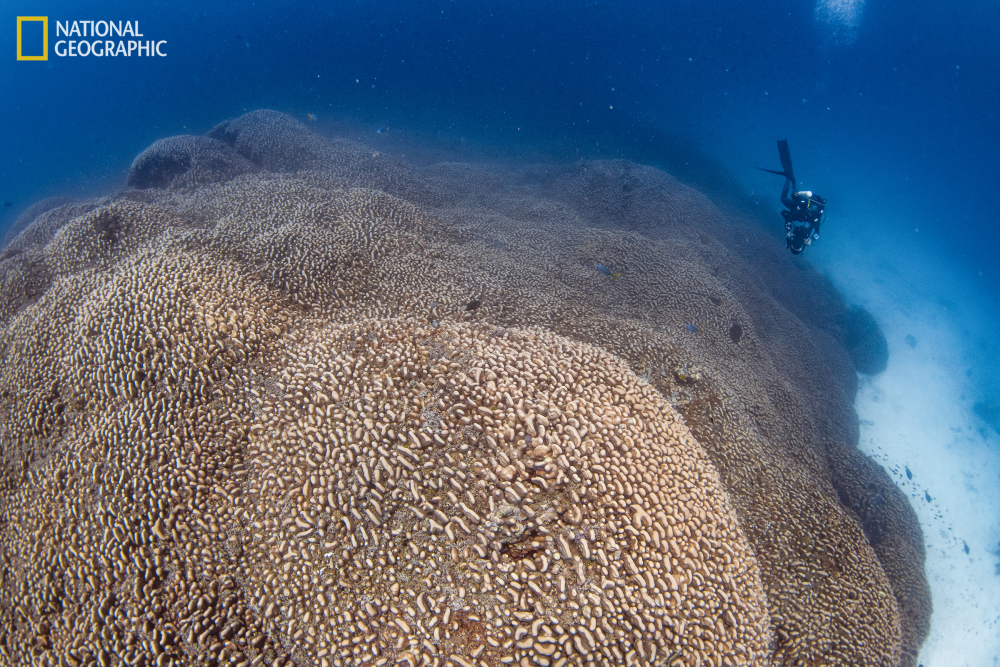The world’s largest coral colony has been discovered in the Solomon Islands, measuring a whopping 34 by 32 meters (112 by 105 feet). This thing is so huge it’s even visible from space, and yet it’s been hiding away from human eyes for around 300 years.
The coral sits at a depth of 12 meters (42 feet), which is perhaps why when the team on National Geographic’s Pristine Seas project first spotted something lurking in the depths, they thought it looked like a shipwreck, as their map had suggested there was one in the area. Cinematographer Manu San Félix and his son Inigo dove down to take a closer look and were stunned to realize that this monumental structure they’d been looking at was, in fact, a colony of living things.
Coral may look a bit planty, but it’s very much alive, most closely related to jellyfish and sea anemones. Individual coral polyps band together in a colony, and lots of colonies can make up a reef. This particular gargantuan lump is thought to contain nearly one billion polyps, putting it among the largest animal gatherings in the world.
There are lots of different species of coral, a rich diversity of which can be found in the coral triangle where this latest discovery was made, but this species is Pavona clavus. It’s known as the shoulder blade coral because it looks a bit like a shoulder, and comes in hues of brown, yellow, red, pink, and blue.

If you’ve ever wondered what roughly a billion coral polyps look like, this is it.
Image credit: Manu San Félix, National Geographic Pristine Seas
Pavona is a hard coral, but that’s not to say it’s tough. Corals are very sensitive to environmental change, something we’ve been witnessing the effects of for decades as we lose reefs to bleaching.
As for how this giant colony has survived, it likely comes down to its location where the water is cooler and there’s a nearby shelf providing shelter. That it’s still alive means it’s endured everything that’s been thrown at our oceans over the last 300 years – which, just to put it in context, means this coral’s been kicking around since before the Declaration Of Independence was signed.
Since then, the world has witnessed global warming at a rate the planet’s never seen before, overfishing, pollution, agricultural runoff, and ocean acidification. Think about how many unprecedented events you’ve witnessed in the last five years, and then times that by 60 – that’s how fatigued with the state of the world this coral must feel.
In spite of all that, it’s still alive, and now that we’ve found this record-breaking beauty, we need to keep it alive. So far, it’s survived with the protection of the local community because in the Solomon Islands waters are owned by the local community, but now they want national support to conserve their natural history.
We’re all rooting for you, giant living underwater mountain.
Source Link: Divers Thought They'd Found A Shipwreck, But This Giant Shadow Is Alive